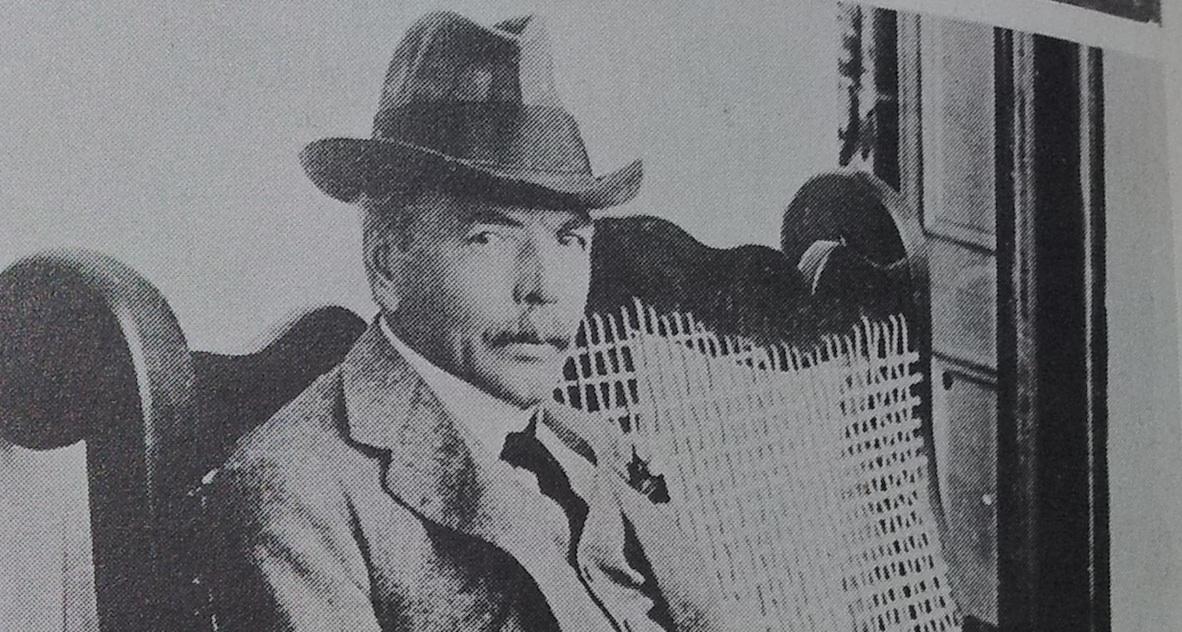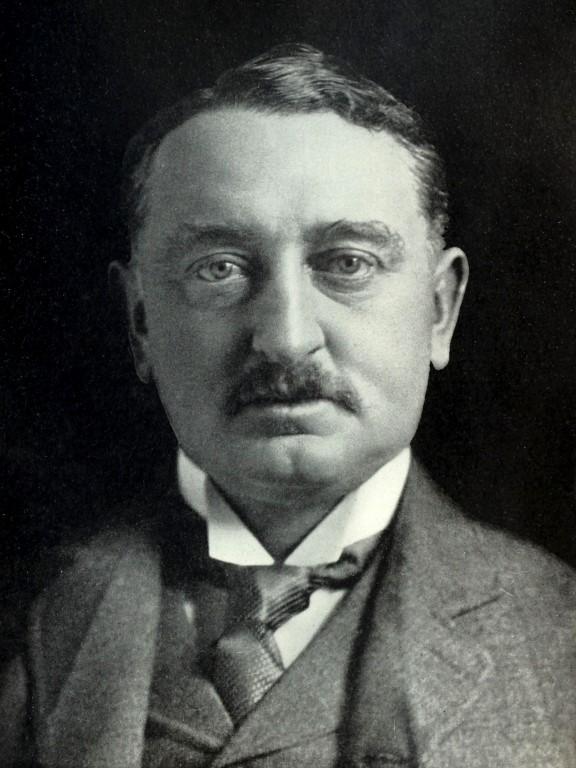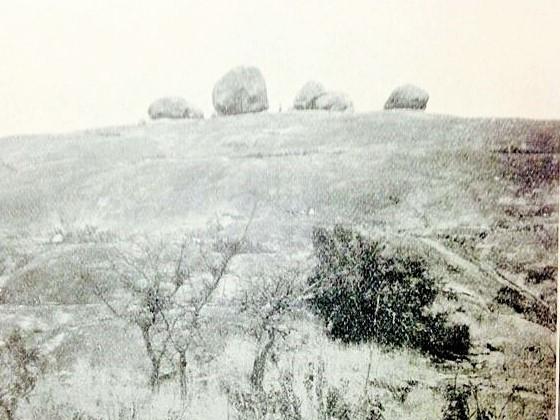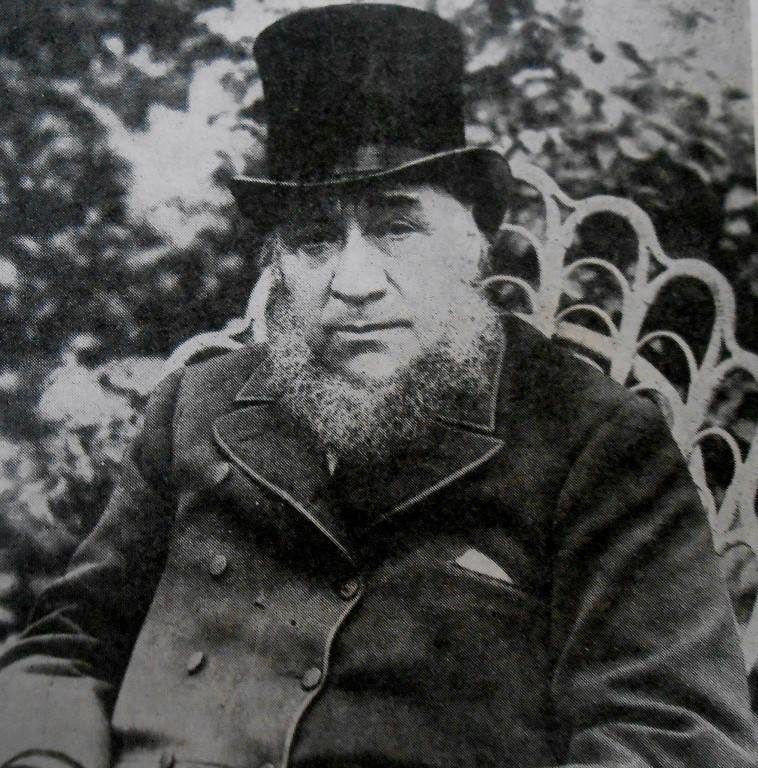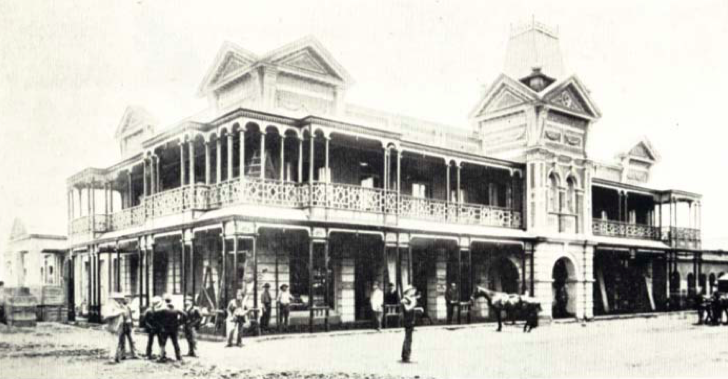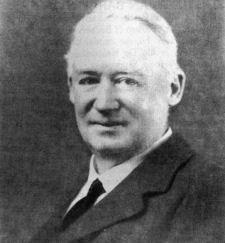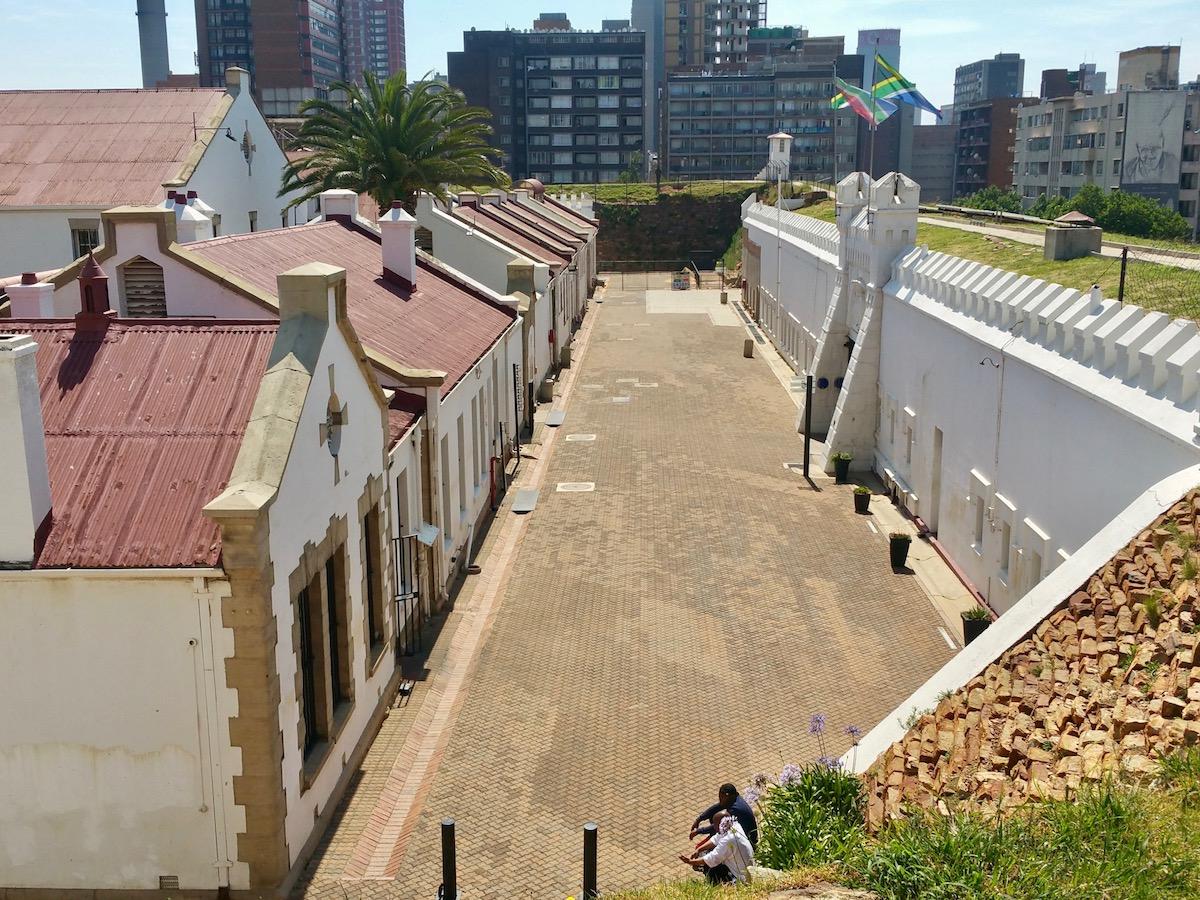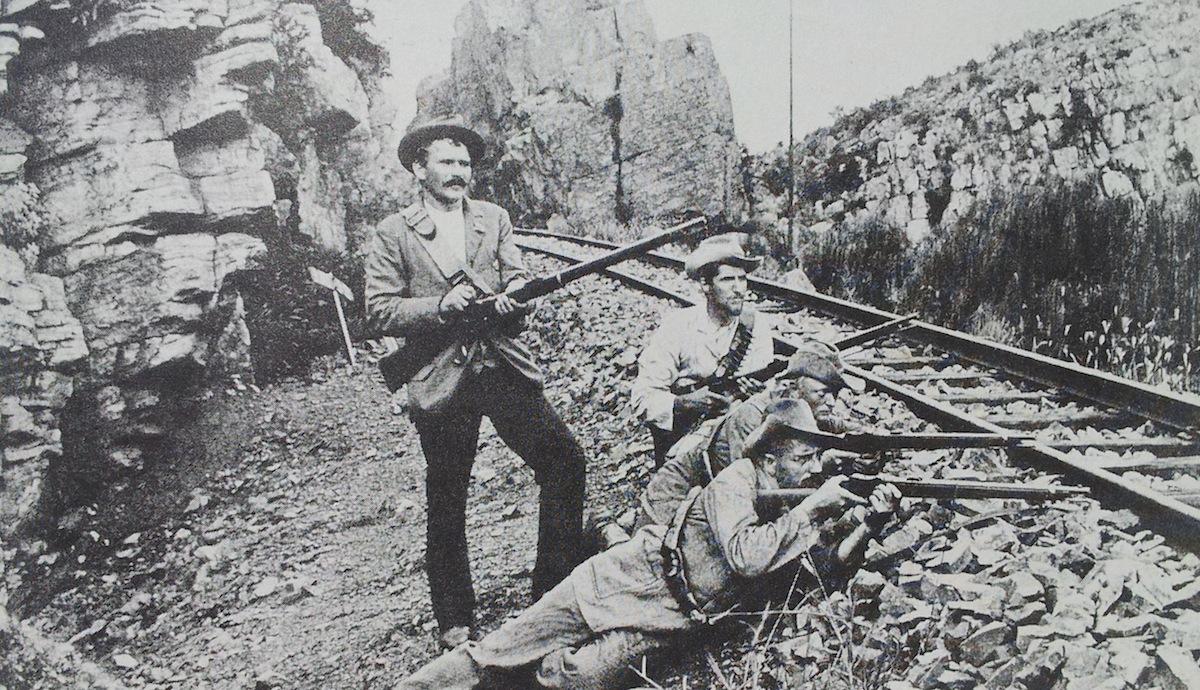
Disclaimer: Any views expressed by individuals and organisations are their own and do not in any way represent the views of The Heritage Portal. If you find any mistakes or historical inaccuracies, please contact the editor.
In the article below, journalist Lucille Davie unpacks the captivating story of the Jameson Raid, a major event in the history of Johannesburg and South Africa. The piece was first published on the City of Johannesburg's website on 27 October 2011. Click here to view more of Davie's work.
“Johannesburg is ready . . . [this is] the big idea which makes England dominant in Africa, in fact gives England the African continent,” wrote Cecil John Rhodes to Alfred Beit in August 1895.
The letter, quoted by Thomas Pakenham in The Boer War, refers to the Jameson Raid of 1895/6, an abortive mission in which the foreigners or Uitlanders in Johannesburg encouraged Scotsman Dr Leander Starr Jameson and his troop of some 400 soldiers to ride into the town and force Paul Kruger, president of the Zuid Afrikaanse Republiek, to accede to their demands. And in the process, the British imperialist programme would bag the gold fields of South Africa, at the time the third largest source of gold in the world.
But it ended at Krugersdorp, some 20km west of Joburg, with a dishevelled bunch of men being sent to jail. “The raiders looked a sorry crowd,” wrote TV Bulpin in Lost Trails of the Transvaal. “Dirty, miserable, many of them wounded, some weeping, and Jameson trembling like a leaf in the wind.”
Dr Leander Starr Jameson
It would leave 16 raiders and 1 Boer dead, and several dozen wounded. Some 65 men were sent to jail, with five of them being charged for treason. The raid would be a major factor in the South African War, which began three years later, in 1899, and endured until 1902. The war was a desperate struggle by the British to annex the Transvaal, and make South Africa a British colony, which they succeeded in doing. In 1910 South Africa was given self rule under a constitutional monarchy and in 1961 it became a republic.
Jameson had been put up to the raid by Rhodes, among others, then the prime minister of the Cape Province, and a wealthy businessman. The raid had a surreal quality to it, in which Jameson received mixed messages along the way, leading him to believe that he had the support of Joburgers, who would supply reinforcements whenever he needed them, in his march to rescue them from Kruger.
Jameson was stationed in Kimberley as a doctor and had Kruger and Matabele chief Lobengula as his patients, according to Wikipedia. It was here that he met Rhodes.
Jameson left his medical practice and got involved in Rhodes’s expansionist plans in then Rhodesia, becoming chief magistrate and administrator in Mashonaland between 1891 and 1896. They had been friends for 20 years before the raid but Rhodes was to prove to be a friend only when it suited him.
Rhodes
Rhodes had made his fortune at the diamond fields of Kimberley. He then ploughed his capital into gold mining in Johannesburg, where the diggings were declared in October 1886. By the age of 37, said Bulpin, he was earning a tidy fortune of £300 000 a year. His company, Consolidated Gold Fields, ran Rhodesia, now Zimbabwe, a country he gave his name to, and where he and Jameson are buried.
Cecil John Rhodes (via Wikipedia)
Grave of Cecil John Rhodes in the Matopos (Railways of Southern Africa Magazine)
There were a number of other large financial houses that dominated business in the budding Johannesburg. These companies were controlled and run by the likes of Beit, Barney Barnato, Hermann Eckstein, Abe Bailey, Joseph Benjamin Robinson and Lionel Phillips, among others.
These Randlords were banging heads with Kruger’s government, principally over the high taxes he was demanding from them. The dynamite monopoly owned by Kruger’s government; the absence of the franchise for the Uitlanders; and the insistence of Afrikaans being the first language in schools, were other grievances the Uitlanders had. They established the Reform Committee, principally to bring pressure to bear on Kruger to meet their demands.
Under these circumstances Joburg became increasingly tense. Businesses along the whole of the Rand ground to a halt, with traders and their families anxious to leave town.
“The government was uncomfortably aware that many of the foreigners’ grievances were only too real. Kruger was especially conciliatory,” indicated Bulpin.
Kruger made an effort to soften some of the regulations and taxes, and promised to look into other issues. The tension was eased, and people started to go about their business. The revolt was put on the back burner.
But Jameson was up in the bush in Rhodesia and Botswana, and no one had informed him of these developments.
Paul Kruger (Seventy Golden Years)
Leaving for the Transvaal
On Sunday, 29 December, 1895, Jameson telegraphed Rhodes, telling him he was leaving that night for the Transvaal. Rhodes responded by sending an unsigned letter, drafted by the Reform Committee to Jameson, justifying the raid, to The Times in London. Then Rhodes laid low in his palatial mansion in Cape Town.
Jameson assembled his band of Rhodesian mounted police at Pitsani, just over the border in Botswana.
“This was the great Dr Jim, pioneer Administrator of the Chartered Company in Rhodesia, and Cecil Rhodes’s right-hand man. He was dressed in a fawn-coloured coat, a short, slight figure, with a pale face, nervous brown eyes, and a boyish grin. But his voice was a magnet,” recorded Pakenham.
Jameson pulled out the letter, “a kind of passport”, an invitation from the committee of Uitlanders organised by Rhodes and Beit and the mine owners and other business people who represented British interests in the town. The letter had been sent to Jameson several months beforehand and was undated, supposedly for the moment after the uprising in the town had begun.
“It would cover them with both the Chartered Company and the Imperial government in case there were awkward questions,” stated Pakenham. Without it they might look like “pirates”.
There was another issue to be settled before heading out – they had to break communication with Rhodes in the Cape. Rhodes had slyly communicated to Jameson over the previous days by telegram but had avoided signing them with his name, leaving the final decision to Jameson. The telegram lines were cut but not before Kruger had got word of the revolt.
A gamble
It was a gamble. If they lost, they would be sentenced to death. If they won, they would march into Johannesburg and Pretoria triumphant, and the British government would annex the Transvaal, and probably banish Kruger.
Sir John Willoughby, Jameson’s lieutenant colonel, recounts the circumstances in his report to the War Office in London, as found in Louis Creswicke’s South Africa and the Transvaal War.
“"He [Jameson] then explained to the force—(a) that no hostilities were intended; (b) that we should only fight if forced to do so in self defence; (c) that neither the persons nor property of inhabitants of the Transvaal were to be molested; (d) that our sole object was to help our fellow-men in their extremity, and to ensure their obtaining attention to their just demands.
"Dr Jameson's speech was received with the greatest enthusiasm by the men, who cheered most heartily.”
The bugle sounded. “Jameson mounted a black stallion. He took off his felt hat, and there were three ringing cheers for the Queen. Then they trotted out of Pitsani, followed by the African servants and the mule-carts. The moon had risen, flashing on the tin walls of the village and the brass-and-steel mountings of the Maxims, before the column was engulfed in dust,” recounted Pakenham.
Jameson and his men left Pitsani at 6.30pm and marched through the night. They had with them 8 maxims and 3 field guns, 11 mule carts and 30 packhorses.
Halt his venture
By the time they reached Zeerust, some 60km into South Africa, their venture had been communicated to Kruger in Pretoria. The extraordinary thing is that, according to Bulpin, along the way Jameson had been asked to halt his venture.
"At Doomport (ninety-one miles from Pitsani), during an 'off-saddle' early on Tuesday morning, December 31, a mounted messenger overtook us, and presented a letter from the High Commissioner, which contained an order to Dr Jameson and myself to return at once to Mafeking and Pitsani,” recorded Willoughby.
"A retreat by now was out of the question, and to comply with these instructions an impossibility.”
There were several realities at play now. There was no food for the men or horses on the route they had just passed. It was only on the road ahead that there was a possibility of obtaining food. By now they had already travelled two-thirds of the route, with “a large force of Boers” assembling behind them.
"It was felt, therefore, that to ensure the safety of our little force, no alternative remained but to push on to Krugersdorp to our friends, who, we were confident, would be awaiting our arrival there.” Willoughby said it was therefore impossible to turn back – the only way was forward, in the belief that Jameson and his troops were going to “avert a massacre”, which “would be imminent in the event of a crisis such as had now occurred”.
Mild panic
Meanwhile, back in Joburg the Randlords were in a mild panic, when they heard that Jameson was on his way. A show of force was hastily rustled up at the Rand Club. But this had the opposite effect – it encouraged a wave of patriotism, and the criticism of the Kruger government quickly vanished.
“We did not look upon the Rebellion as serious as it did not originate with the people but was artificially manufactured from above by intriguers. The whole thing would have presented a farcical spectacle, if the results had been less serious,” Kruger wrote.
Kruger reacted to the Raid with another clever tactic: he withdrew his police force, leaving the Reformers to defend their mining and private property from unruly elements on the streets, a situation they had precipitated. It left them in the situation with possibly some 1 500 men and ammunition for, at the most, a few hours’ defence. If Kruger had decided to attack, they would have been defenceless.
Rand Club in the 1890s (LE Neame's The Rand Club 1887-1957)
The march continues
Jameson merrily marched on, his men looking slightly the worse for wear, running low on food and sleep. The Boers watched them from a distance, leaving them be while a commando was being assembled to meet them at a future point.
They were headed for Krugersdorp on the west rand, where Jameson was hoping the Reform Committee would meet them with support. Then, within 20km of Krugersdorp on the morning of 1 January 1896, two cyclists from Johannesburg met them, presenting them with several intriguing letters from the committee.
“These letters expressed the liveliest approval and delight at our speedy approach, and finally contained a renewal of their promise to meet the column with a force at Krugersdorp. The messengers also reported that only 300 armed Boers were in the town,” reported Willoughby. This news was greeted with loud cheers by the troops.
The raiders rode on. Eleven kilometres from the town of Krugersdorp, Willoughby sent a warning to the townsfolk that if any resistance was given, the town would be shelled.
The message was ignored. The raiders rode on, and at 4pm they topped a koppie and looked down on a valley. In the distance the Boers were lined up, waiting for them.
Willoughby shelled them but caused no damage or injury. He sent a contingent of 100 men charging across the valley. When they got closer, the Boers opened fire. Raiders fell, dead and wounded. Others crept away, looking for shelter, while the rest fled.
Jameson was undeterred. He moved south, looking for another way into Joburg, still expecting the Joburg contingent to meet him at any moment.
Time running out
But time was running out for the raiders. They were now almost completely surrounded by Boers, and it was getting dark.
“In the dusk the Boers could be seen closing in on three sides, viz, north, east, and south. The road to Johannesburg appeared completely barred, and the last opportunity of slipping through, which had presented itself an hour ago when the renewed firing was heard, was gone, not to return,” noted Willoughby.
Jameson was still optimistic of reaching Joburg, which he estimated to be about 10km away. Willoughby indicated in his report that they had “an excellent chance of reaching that town without further opposition”.
Throughout the night the Boers fired sporadically on them. By 3.30am the raiders made moves to continue towards Joburg, but at 4am the Boers opened heavy fire on them. Fortunately, they were partially shielded behind a slope.
These skirmishes continued, with Jameson and his troops making small advances towards their destination.
“In passing through the various mines and the village of Randfontein, we met with hearty expressions of goodwill from the mining population, who professed a desire to help if only they had arms,” said Willoughby.
Then he received information that the road ahead by held by 400 Boers, cutting off their advance to Joburg.
More bad news
The only option left to the raiders was to storm the Boers, a daunting prospect. Then more bad news arrived.
“At this moment Dr Jameson received a letter from the High Commissioner again ordering us to desist in our advance. Dr Jameson informed me at the same time of the most disheartening news, viz that he had received a message stating that Johannesburg would not, or could not, come to our assistance, and that we must fight our way through unaided.”
Tired, hungry, thirsty, outnumbered, and now on their own . . . the raiders at last came face to face with the reality of their situation.
"Surrounded on all sides by the Boers, men and horses wearied out, outnumbered by at least six to one, our friends having failed to keep their promises to meet us, and my force reduced numerically by one-fourth, I no longer considered that I was justified in sacrificing any more of the lives of the men under me,” wrote Willoughby.
A white flag, the apron of the servant, was raised. The surrender was swift.
Jail
By 9 January 64 raiders and reformers were in jail. They spent 11 days there before being released on bail. Five members of the Reform Committee – Lionel Phillips, George Farrar, John Hays Hammond, Frank Rhodes (brother of Cecil John) and Percy Fitzpatrick (who wrote Jock of the Bushveld) – were left in jail.
Percy Fitzpatrick (via Wikipedia)
That wily old Kruger decided, as an act of humiliation to Rhodes and the British government, to send the reformers back to England to stand trial. He also published the correspondence between Rhodes and Jameson, exposing their plotting to the world.
Rhodes was forced to testify, presenting “a wretched figure he cut during the two days he was in the witness box”. They were charged with treason and sentenced to death. But the sentences were commuted to 15 years and then dropped. Instead, they paid fines of £25 000, and had to abstain from politics for 15 years. Jameson was given a 15-month sentence, part of which he served in London, before returning to South Africa. Incredibly, he later served as prime minister of the Cape for four years, while Rhodes was forced to resign as prime minister of the Cape.
Two of the reformers, Aubrey Woolls-Sampson and Walter Karri-Davis, chose to remain in jail in Pretoria rather than admit their guilt by paying the fines. They were eventually released in June 1897, some 18 months after being arrested.
Deteriorating conditions
But although Kruger and his government appeared receptive to demands made by the British government, conditions for Uitlanders continued to deteriorate. Policemen on the streets were recruited from the surrounding farms, given arms, and with hardly an English word in their vocabulary, patrolled the streets of the mining town, applying the law with a heavy hand.
Just after the raid Kruger converted the 1893 prison in Hillbrow to a fort, known now as the Old Fort, with a cannon strategically pointing towards the town, a reminder that hostilities were still sharply felt between the Uitlanders and the Boer republic.
British troops started to assemble on the Transvaal border. Kruger ordered that they be withdrawn. They remained. On 5pm on 11 October 1899 president Paul Kruger declared war on Britain. More troops were placed on ships bound for the Cape. The South African War had begun.
Old Fort Johannesburg (The Heritage Portal)
Memorials and graves
Two memorials commemorate the place where the raiders surrendered to the Boers, on the outskirts of Krugersdorp. Graves can be found in the Burgershoop Cemetery in Krugersdorp and the Randfontein Estates Gold Mine Military Cemetery. Several graves can be found in the Braamfontein Cemetery.
Lucille Davie has for many years written about Jozi people and places, as well as the city's history and heritage. Take a look at lucilledavie.co.za
Comments will load below. If for any reason none appear click here for some troubleshooting tips. If you would like to post a comment and need instructions click here.

